Diamond Education
Cut is one of the most important factors to consider
A diamond’s cut grade is really about how well the facets interact with light, whether its round, heart-shaped, marquise, or pear. Diamonds are renowned for their ability to transmit light and sparkle so intensely.
Precise artistry and workmanship are required to fashion a stone so that its proportions, symmetry, and polish deliver the magnificent return of light only possible in a diamond. The cut is measured using the GIA’s international grading system in which cut grades range from Excellent to Poor. A diamond’s cut is crucial to the stone’s final beauty and value. Of all the diamond 4Cs, it is the most complex and technically difficult to analyze.
Excellent
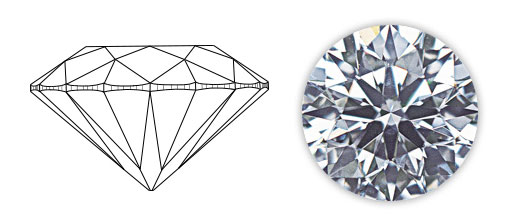
The diamond, which has an even pattern of bright and dark areas, scores in the top category for all grade-setting determinants.
Very Good
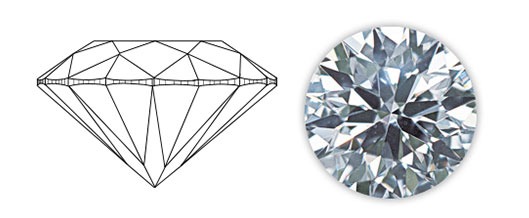
This diamond’s grade is determined by brightness, scintillation, and polish. Although no individual proportions would necessarily cause its brightness or scintillation to perform poorly, the combination of this particular set of proportions leads to increased darkness in the pavilion mains.
Good

This diamond’s grade is limited by its scintillation. In this case, the somewhat shallow pavilion angle produces dark pavilion mains.
Fair
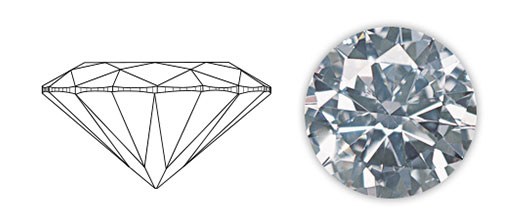
This diamond’s grade is limited by its scintillation. The combination of a shallow crown angle and a somewhat shallow pavilion angle leads to a face-up appearance with a lack of contrast and general darkness.
Poor
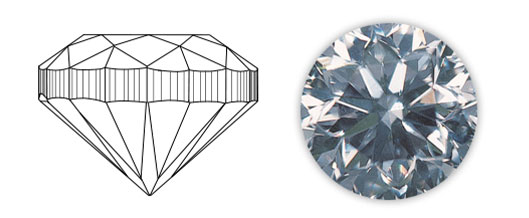
This diamond’s grade is limited by its weight ratio. Although most of the proportions for this diamond are fairly standard, the extremely thick girdle greatly increases the total depth. Therefore, this diamond’s diameter is much smaller than its carat weight would indicate.
To determine the cut grade of the standard round brilliant diamond – the shape that dominates the majority of diamond jewelry – GIA calculates the proportions of those facets that influence the diamond’s face-up appearance. These proportions allow GIA to evaluate how successfully a diamond interacts with light to create the three desirable visual effects such as
- Brilliance: Internal and external white light reflected from a diamond
- Fire: Internal and external white light reflected from a diamond
- Scintillation: The amount os sparkle a diamond produces, and the pattern of light and dark areas caused by reflections within the diamond
GIA’s diamond cut grade also takes into account the design and craftsmanship of the diamond, including its weight relative to its diameter, its girdle thickness (which affects its durability), the symmetry of its facet arrangement, and the quality of polish on those facets.
Note: Only round brilliant cut diamonds in the D to Z color range get a cut grade from GIA while all the other shapes do not have a cut grade.
Derco only sells and recommends excellent cut to good cut grades because they will maximise the sparkle and shine.
Understanding Color
Second to cut, a diamond’s color is the second most important factor to consider, as it can be noticeable to the naked eye.A chemically pure and structurally perfect diamond has no hue, like a drop of pure water, and consequently, a higher value. While many diamonds appear to be colorless most contain tints of yellow, brown or grey tint in varying degrees. GIA’s D-to-Z color-grading system measures the degree of colorlessness by comparing a stone under controlled lighting and precise viewing conditions to masterstones of established color value.The scale begins with the letter D, representing colorless, and continues, with increasing presence of color, to the letter Z. Many of these color distinctions are so subtle that they are invisible to the untrained eye; however, these distinctions make a very big difference in diamond quality and price.
How is a Diamond’s Color Graded?
Color
Choosing the right color.
We recommend any color from D to J.The most popular color grades purchased by our clients at Derco are in the F to I color range.
A Diamond’s Clarity
Natural diamonds are the result of carbon exposed to tremendous heat and pressure deep in the earth. This process can result in a variety of internal characteristics called ‘inclusions’ and external characteristics called ‘blemishes.’
Evaluating diamond clarity involves determining the number, size, relief, nature and position of these characteristics, as well as how these affect the overall appearance of the stone. While no diamond is perfectly pure, the closer it comes, the higher its value.
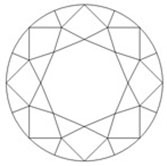
No inclusions and no blemishes visible to a skilled grader using 10x magnification.

No inclusions and only blemishes are visible to a skilled grader using 10x magnification.
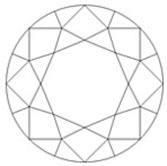
Minute inclusions that range from extremely difficult to very difficult to see are visible to a skilled grader using 10x magnification.
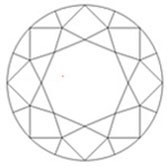
Minute inclusions that range from extremely difficult to very difficult to see are visible to a skilled grader using 10x magnification.
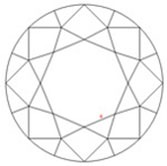
Minor inclusions that range from difficult to somewhat easy to see are visible to a skilled grader using 10x magnification.
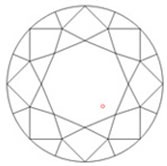
Minor inclusions that range from difficult to somewhat easy to see are visible to a skilled grader using 10x magnification.
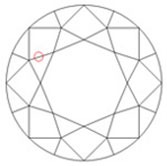
Noticeable inclusions that range from easy to very easy to see are visible to a skilled grader using 10x magnification.
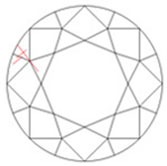
Noticeable inclusions that range from easy to very easy to see are visible to a skilled grader using 10x magnification.
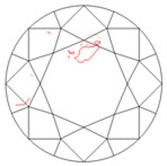
Obvious inclusions are visible to a skilled grader using 10x magnification and may affect transparency and brilliance.
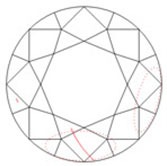
Obvious inclusions are visible to a skilled grader using 10x magnification and may affect transparency and brilliance.
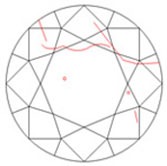
Obvious inclusions are visible to a skilled grader using 10x magnification and may affect transparency and brilliance.
The GIA Clarity Scale has 6 categories, some of which are divided for a total of 11 specific grades.
- Flawless (FL) No inclusions and no blemishes visible under 10x magnification
- Internally Flawless (IF)No inclusions visible under 10x magnification
- Very, Very Slightly Included (VVS1 and VVS2) Inclusions so slight they are difficult for a skilled grader to see under 10x magnification
- Very Slightly Included (VS1 and VS2)Inclusions are observed with effort under 10x magnification, but can be characterized as minor
- Slightly Included (SI1 and SI2) Inclusions are noticeable under 10x magnification
- Included (I1, I2, and I3) Inclusions are obvious under 10x magnification which may affect transparency and brilliance
Choosing The Right Clarity
While flawless diamonds are the rarest and most highly prized, a diamond does not have to be flawless to be striking. In fact, the most popular clarity ranges are the VS1-SI1.Diamonds in these clarity ranges can appear flawless and eye-clean to the naked eye.Some SI2 diamonds might also be eye-clean.
Note: For Asscher and Emerald cut diamonds we recommend a VS1 or higher clarity grade.
What Is Carat Weight
To put it simply, diamond carat weight measures how much a diamond weighs.
A metric “carat” is defined as 200 milligrams. Each carat is subdivided into 100 ‘points.’ This allows very precise measurements to the hundredth decimal place. A jeweler may describe the weight of a diamond below one carat by its ‘points’ alone. For instance, the jeweler may refer to a diamond that weighs 0.25 carats as a ‘twenty-five pointer.’ Diamond weights greater than one carat are expressed in carats and decimals. A 1.08 carat stone would be described as ‘one point oh eight carats.One should not forget that high carat weight does not necessarily mean a larger looking diamond, since the weight distribution is also affected by the quality of the cut.
Carat Weight

All else being equal, diamond price increases with carat weight, because larger diamonds are more rare and more desirable. But two diamonds of equal carat weight can have very different values (and prices) depending on three other factors within the 4Cs: Clarity, Color, and Cut.
What is fluorescence
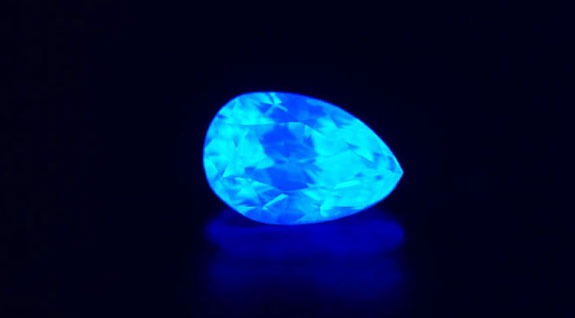
Fluorescence is the visible light some diamonds emit when they are exposed to invisible ultraviolet (UV) rays. On a GIA diamond grading report, fluorescence refers to the strength, or intensity, of the diamond’s reaction to long-wave UV, which is an essential component of daylight. The light emitted lasts as long as the diamond is exposed to the ultraviolet source. The majority of diamonds with medium blue, string blue or very strong blue fluorescence appear cloudy and milky. Because of this, these diamonds sell for 25 to 35 percent less than similar diamonds with faint or no fluorescence.
GIA Diamond Grading Report
The GIA Diamond Grading Report includes an assessment of the 4Cs – Color, Clarity, Cut, and Carat Weight – along with a plotted diagram of its clarity characteristics and a graphic representation of the diamond’s proportions. GIA issues the Diamond Grading Report for loose natural diamonds only, weighing 0.15 carats or more. For standard round brilliant cut diamonds falling in the D-to-Z color range, the report also includes a GIA Cut grade.
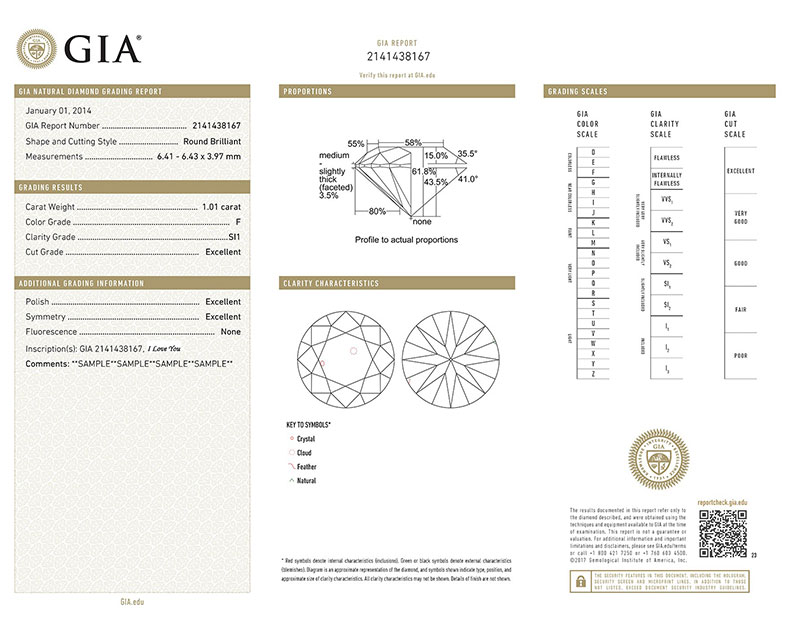
Date diamond was examined by GIA.
Unique GIA report number registered in GIA’s extensive global database.
The outline of the diamond (shape) and the pattern of the facet arrangement (cutting style).
Diamond dimensions listed as “minimum diameter – maximum diameter x depth” for round diamonds and “length x width x depth” for fancy-shaped diamonds.
Weight given in carats, recorded to the nearest hundredth of a carat. One carat is equal to 1/5 of a gram.
The absence of color ranging from colorless to light yellow or brown when compared to GIA Master Color Comparison Diamonds. Graded on a D-to-Z scale. If “*” appears next to the color grade, a color treatment was detected.
The relative absence of inclusions and blemishes. Graded on a scale from Flawless to Included based on size, nature, number, position, and relief of characteristics visible under 10x magnification.
For standard, D-to-Z color, round brilliant diamonds. Cut grade incorporates the aspects of face-up appearance, design, and craftsmanship. Graded on a scale from Excellent to Poor.
Smoothness of the diamond’s surface, assessed on a scale ranging from Excellent to Poor.
Exactness of the diamond’s outline, and the shape, placement, and alignment of its facets, assessed on a scale ranging from Excellent to Poor.
Strength and color of the diamond when viewed under long-wave ultraviolet light. A fluorescence description of “none” represents a range of fluorescence from Indiscernible to Very Faint. Used for identification purposes.
Any text, symbols, logos, or a unique GIA report number inscribed on the diamond’s girdle.
Additional identifying characteristics or features that are not otherwise represented on the report. If a treatment is detected, such as laser drilling, it would be described here.
Graphic profile representation of the diamond’s actual proportions.
Approximates the shape and cutting style of the diamond. Symbols indicate the type or nature, position, and the approximate size of a clarity characteristic.
Lists the characteristics and symbols shown on the plotting diagram, if present.
Illustrates the GIA Color grades and their relative positions in the GIA Diamond Color Grading System.
Illustrates the GIA Clarity grades and their relative positions in the GIA Diamond Clarity Grading System.
Illustrates the GIA Cut grades and their relative position in the GIA Diamond Cut Grading System. Available for standard round brilliant cut diamonds in the D-to-Z color range and
Micro printing, security screens, watermarks ,a two-dimensional barcode, a hologram, and sheet numbering safeguard report integrity and facilitate document authentication.
A two-dimensional barcode that, when scanned, verifies data on the report against the GIA database.
Diamond Shapes
-
Round
-
Oval
-
Cushion
-
Emerald
-
Radiant
-
Princess
-
Asscher
-
Marquise
-
Pear
-
Heart
Round Diamond
Round is the most popular of the diamond engagement ring shapes, and it holds this title because the round brilliant cut is designed to produce maximum brightness, fire and sparkle in a colorless diamond. The modern round brilliant cut diamond has a round girdle outline, 56 symmetrically placed triangular and kite-shaped facets, a table facet and an optional culet facet, for a total of 57 or 58 facets.The perfect version of a round brilliant cut diamond exhibits the Hearts and Arrows phenomenon. Such diamonds are cut with utmost precision and possess superior characteristics; their facets are ideally aligned, displaying the pattern of eight hearts and eight arrows. Browse Round Diamonds
Oval Diamond
Although a shape that is many hundreds of years old, the oval diamond has gained popularity for engagement rings in recent years because of its elegance and the fire it shows when cut in the brilliant faceting style. In addition, with its greater surface area, an oval diamond may appear larger than a round brilliant diamond of the same weight (and, like rectangular and marquise diamonds, can help elongate shorter fingers). One advantage over other fancy shapes is that the rounded edges make it less prone to chipping.Oval shaped diamonds, along with other elongated fancy shaped diamonds, may display a bow-tie effect to a certain degree. the bow- tie on a well-cut oval diamond will be minimal. The recommended length-to-width ratio is between 1.33 and 1.66. Browse Oval Diamonds
Cushion Diamond
Also known as the pillow cut, this cut has been adorning the fingers of brides for centuries with its curved sides and rounded corners.Some cushion cut diamonds have a “crushed ice” look which the sparkle is similar to a radiant or princess cut diamonds. While other cushion cut diamonds sparkle more like an excellent cut round brilliant. Personal taste is the deciding factor on which type of sparkle you prefer. But most clients usually pick the cushion brilliant look sparkle over the crushed ice look. Browse Cushion Diamonds
Emerald Diamond
With its crisp, sophisticated lines, the emerald cut is the most popular of the step-cut diamonds. Its four longer sides have beveled corners with two, three or four concentric rows of facets, parallel to the girdle, on the crown and pavilion. The sleek clean(hall of mirrors) look of this cut highlights the diamonds clarity, color and flawlessness.An emerald cut diamond engagement ring is a perennial favorite with the stylish elite.Usually recommended length-to-width ratio for Emerald cuts is 1.50-1.75. Browse emerald Diamonds
Radiant Diamond
One of the newest rectangular shaped diamonds is the radiant cut, a modified brilliant cut introduced in 1977. It boasts the fire of a round brilliant cut diamond in a rectangular or square shape with cropped corners.The typical length to width ratio for square radiant shaped diamonds is between 1.00 and 1.08. If you prefer a slightly rectangular shape, the length to width ratio should be 1.10 – 1.20. Browse Radiant Diamonds
Princess Diamond
Created in 1981, the princess cut diamond has a modified brilliant facet arrangement that gives it electrifying sparkle and scintillation. It is important to choose a prong or bezel setting that protects the pointed corners. The ideal length to width ratio for square Princess cut diamonds is between 1 and 1.05. If you prefer a slightly rectangular Princess cut diamond, the length to width ratio should be between 1.10 and 1.20. .Browse Princess Diamonds
Asscher Diamond
Asscher cut was first introduced in 1902 but has since modified for greater brilliance.
Due to this unique faceting pattern, Asscher Cuts glimmer, like a hall of mirrors, as opposed to the traditional “sparkle” of round diamonds.The sleek clean look of this cut highlights the diamonds clarity, color and flawlessness.usually the recommended length-to-width ratio for asscher cuts is 1.00-1.05. Browse Assher Diamonds
Marquise Diamond
What’s great about marquise diamond shapesAn attractive, elongated shape with a royal pedigree, the marquise (pronounced “mahr-keez”) was supposedly named for the Marquise de Pompadour, a mistress of King Louis XV, as its outline resembled the shape of her mouth. Because of its shape, a marquise diamond ring will look larger face up than a round diamond of the same weight. A marquise diamond engagement ring can also make the finger appear longer and more slender. Usually the recommended length to width ratio for marquise is 1.75 and 2.25. .Browse Marquise Diamonds
Pear Diamond
An irresistible blend of the marquise and round brilliant, the pear shaped diamond is a stylish choice among diamond shapes. Worn with the point toward the tip of the finger, its graceful, tapered shape can make the hand look slimmer and more elegant, perfect for an engagement ring.When buying a Pear shaped diamond, one should avoid intense bow-tie effect. Usually the recommended length to width ratio for marquise is 1.45 and 1.75 . Browse Pear Diamonds
Heart Diamond
The heart shaped diamond is the essence of romance. It is also a very flattering style for larger fingers.
There are good reasons why this is one of the rarest of diamond shapes for engagement rings. A well-shaped heart requires a large diamond, at least one-half carat. In addition, inclusions tend to be more prominent in this shape, so you want a diamond that has good clarity. Symmetry is also key: The well-rounded lobes should match in size and shape, as well as faceting style, and the cleft between them (as well as the point) should be well defined.The standard length to width ratio is between .90 and 1.10. Browse Heart Diamonds